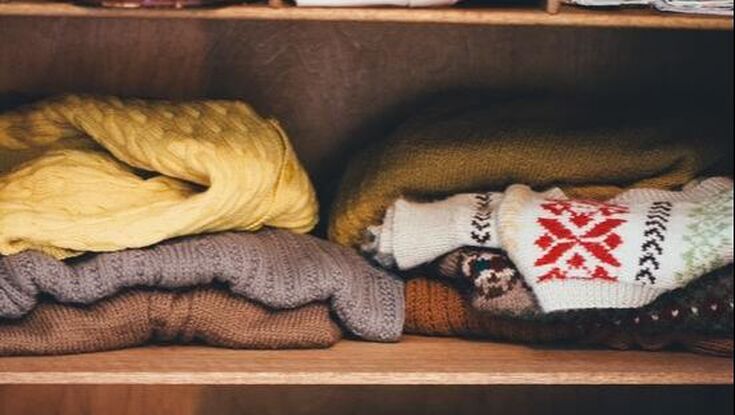*that have nothing to do with saving money.Growing up, there was a huge stigma in my family and culture about shopping at the thrift store and buying anything secondhand. If you didn't buy something new, it was because you couldn't afford it and people from my culture (and I'm sure others, as well) take great pride in demonstrating their financial prosperity. When I went away to college in Santa Cruz, I was introduced to the "hippie" lifestyle and had a plethora of secondhand and vintage stores to choose from. At the time, I was not yet educated about the harms of the fashion industry to the environment and human lives--shopping at the thrift stores was just the cool thing to do and helped me fit in with my classmates. Over the last decade, the detrimental impact of the fashion industry has become clearer, especially with documentaries like The True Cost and the rise of the slow fashion movement. As Maya Angelou said, "When you know better, you do better." There really is no excuse nowadays to continue feeding the fast fashion machine and causing irrevocable damage to the earth and our fellow human beings. Here are the 7 reasons why I shop secondhand that have nothing to do with saving money. It's a real-life treasure hunt.
You never know what unique, beautiful items you will come across that can add charm and pleasure to your every day life. Years ago, I found a gorgeous hand-thrown pie dish that is still one of my favorite items in the kitchen. Recently, I came across a rare vintage Kitty Hawk by Vivian Wang floral sweater that was my go-to this past autumn and winter. Save clothes, books and home wares from the landfill. Did you know that the average American produces 82 pounds of textile waste per year? Non-biodegradable clothes made from polyester, spandex, nylon, and rayon take 20-200 years to degrade. Plus, a recent study from the U.S. Environmental Protection Agency found that 640,000 tons of books are discarded into the landfill annually. All of the books and clothes at thrift stores have so many more years of life left in them. Why not open your home and your heart to gently pre-loved items? Supports local people, causes and nonprofits. Instead of giving your hard-earned dollars to fast fashion giants who distribute profits from the top down, buying secondhand invests directly in the local community. Out of the Closet provides medical care for patients with HIV/AIDS. Goodwill helps people build their skills and find jobs. There are many other options for buying secondhand locally, such as boutique consignment shops, flea markets, and garage sales. Real life human beings make our clothes. Whether we like to think about it or not, there is a person in the world with a family and/or children who works in a factory under conditions that we cannot fathom to make the dress that someone wore once and decided they no longer want. This person's time and energy matter. According to The True Cost website, "There are roughly 40 million garment workers in the world today; many of whom do not share the same rights or protections that many people in the West do. They are some of the lowest paid workers in the world and roughly 85% of all garment workers are women." Respect the woman who leaves her children to go to work to make your clothes--don't let perfect shirts, pants and dresses clutter the earth because you want something new or "trendy." Browse items in a variety of sizes from a wide array of brands across many decades. The majority of people have their "go-to" brands and sizes for everything from jeans to T-shirts. Personally, before I started caring about the environmental and human rights impacts of fashion, I had my favorite stores, including Anthropologie, Lucky Brand, Madewell, etc. It wasn't until my body changed through pregnancy and I needed transitional clothes while my hips and stomach settled into their new size and shape that I discovered the beauty of not relying only on specific sizes from specific brands. This came with a huge mental and emotional shift away from vanity sizing to choosing pieces that look and feel great regardless of the number or letter on the tag. Where else can you find a pair of Stuart Weitzman pumps for 98% off, white jeans from Hollister with the tags still on that fit perfectly (even though you haven't been inside a Hollister in 15 years) and a cool floral blouse with no brand name or sizing information ALL IN THE SAME PLACE? Try pieces outside of your comfort zone and experiment with your style. The more money you spend on a clothing item, the more emotionally invested you become in that item needing to work with your wardrobe. Because everything at secondhand stores are way cheaper than they would regularly be, you'll be much more likely to take a risk on a leather bomber jacket or denim skirt. If it works out, you will have expanded your style and added an interesting statement piece to your collection. If you discover for sure that you can't pull off leather or you hate the way that shade of orange looks with your skin tone, not much harm has been done. And because you're not very emotionally invested in these pieces, you won't hold on to them and create unwanted clutter in your home in a desperate attempt to make sure you got your money's worth. Do you shop secondhand? If so, what's your favorite pre-loved piece you've added to your collection? Let me know in the comments!
0 Comments
Leave a Reply. |
